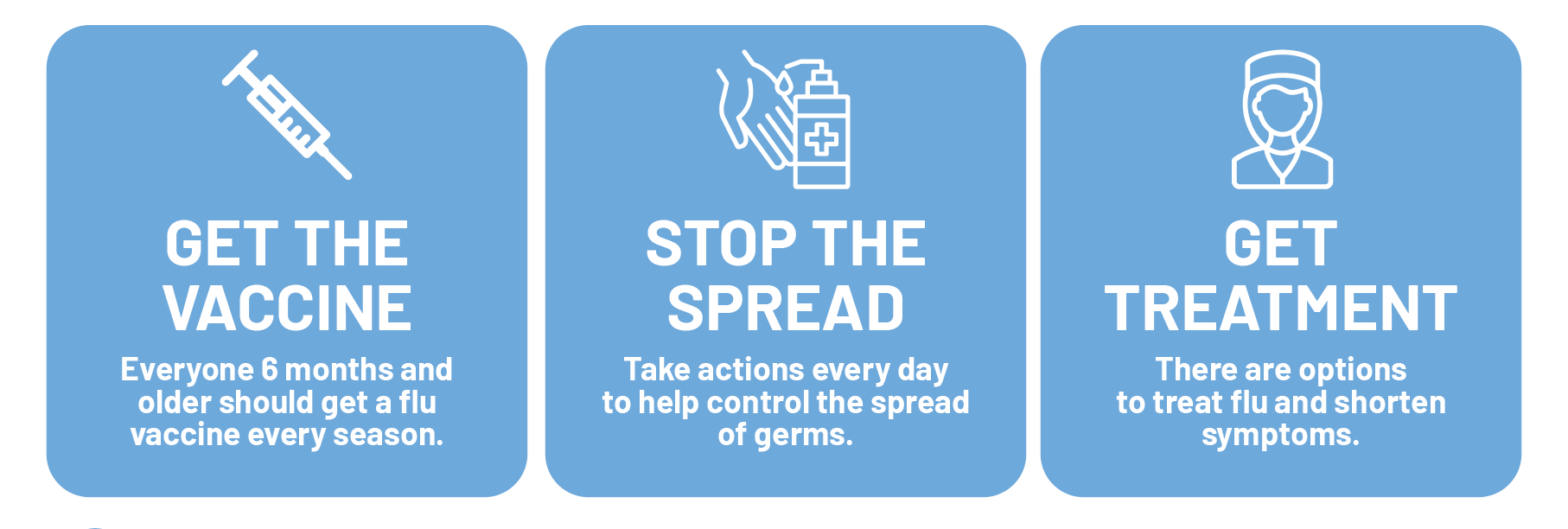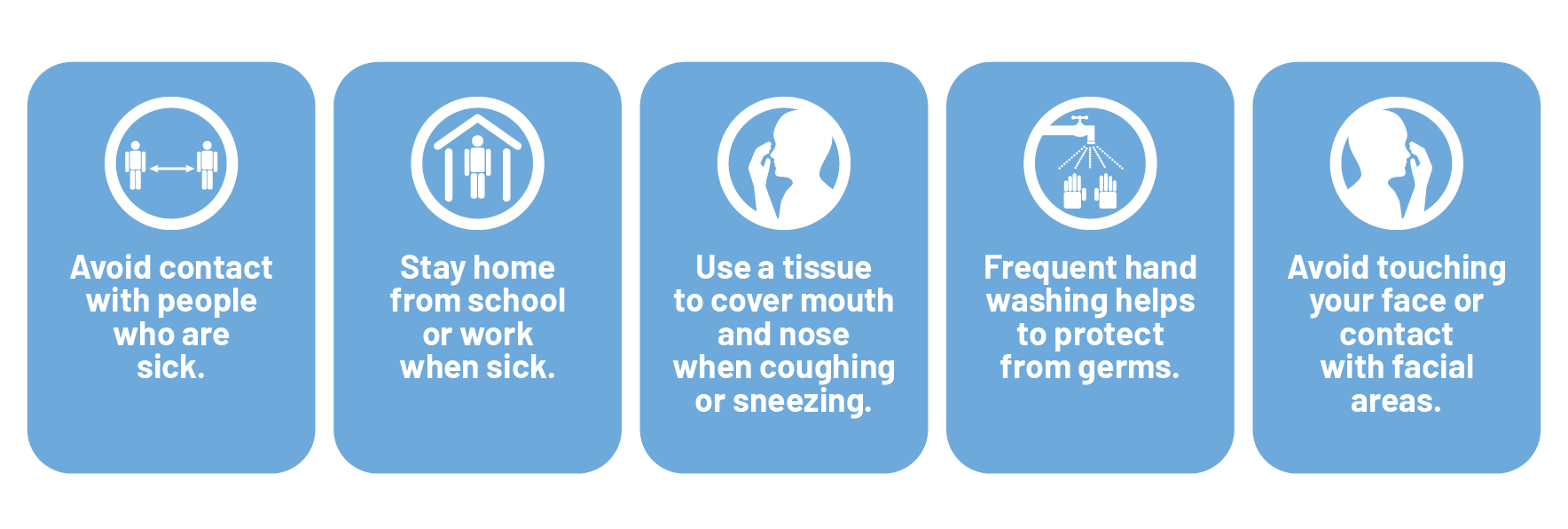The “flu” is a shortened name for the illness called influenza. Although both illnesses have similar symptoms, the flu and COVID-19 are caused by different viruses.
The American Academy of Pediatrics has provided a comprehensive guide that answers many frequently asked questions:
When is flu season?
(Protect yourself by knowing when flu season starts)
What are common flu symptoms?
(Spotting symptoms early will help you get treatment quickly)
What are flu treatment options?
(Understand the available options for treatment)
How long does the flu last?
(Understand when to seek medical care)
How to prevent the flu?
(Understand the protection the flu vaccine offers)
Understanding the Flu vaccine
(Learn about various vaccines and side effects)

Will there be a combined flu and COVID-19 vaccine?
Unfortunately, not for 2023. However, multiple manufacturers have announced a combination shot for flu and COVID-19 that will undergo clinical trials. Like most new vaccinations, a combined flu and COVID-19 shot will likely first be tested on adults before it becomes available for kids. Manufacturers believe combination shots will simplify the process for people to protect themselves against respiratory viruses that typically surge around the same time of the year.
Is it okay to get flu and COVID-19 shots at the same time?
Yes, if you are due for both vaccines it is safe and recommended to get both at the same visit. The fall and winter are the seasons for flu and other respiratory viruses. Talk to your child’s pediatrician if you have any questions.
Getting a Flu Vaccine and a COVID-19 Vaccine at the Same Time | CDC
How are Influenza (Flu) Vaccines made?
All commercially available flu vaccines in the United States are made by private sector manufacturers. Different manufacturers use different production technologies, but all flu vaccines meet FDA safety and effectiveness requirements. Different vaccines have different indications.
The CDC and FDA are responsible for monitoring the safety and components of all vaccines licensed in the United States. The CDC and FDA guarantee that all vaccines are safe and effective.
How can I find credible information about flu and flu vaccines?
Misconceptions about the flu and flu vaccines can lead to reduced vaccination rates and inadequate protection against the virus. That’s why it is important to base health care decisions on accurate information and consult with a doctor.
How can I protect against getting the flu?
The CDC shares actions to protect against flu:
Prevent seasonal flu | CDC
What are some healthy habits to help protect against flu?
The most effective method to decrease the risk of seasonal flu and its potential serious complications is through annual vaccination. However, the CDC shares additional steps to take to avoid getting sick:
Practice general health habits, such as regularly cleaning and disinfecting frequently touched surfaces, especially during illness. Prioritize getting good sleep, staying physically active, managing stress, maintaining hydration, and following a nutritious diet.
Healthy habits to help protect against flu | CDC
